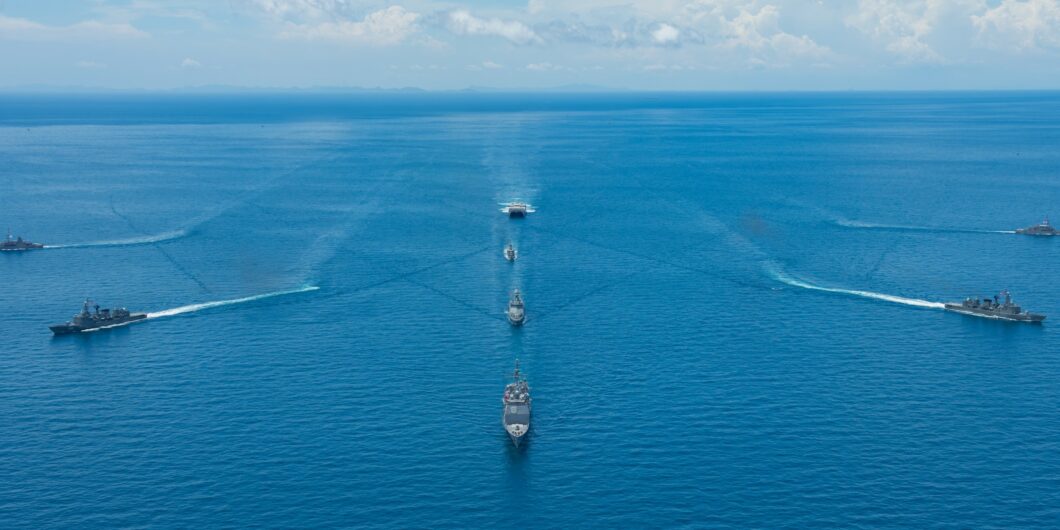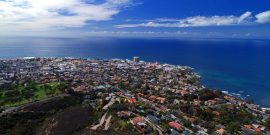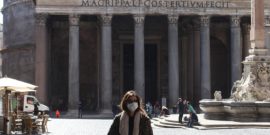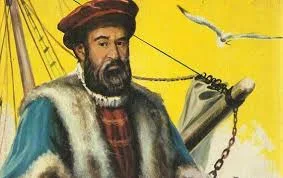Projeto Fernão de Magalhães - leituras
Paulo Roberto de Almeida
[Objetivo: mini-resenhas; finalidade: preparar projeto]
Leitura de alguns livros
sobre Fernão de Magalhães, com notas sintéticas.
Resumo sobre o custo da primeira viagem de circunavegação: pode-se calcular que o custo total da viagem de Fernão de Magalhães foi, em preços atualizados de hoje (um ducado espanhol do início do século XVI equivalente aproximadamente a US 150), de 3 milhões e setecentos mil dólares.
1) José Maria
Latino Coelho: Fernão de Magalhães,
com um prefácio de Júlio Dantas; 4a ed.; Lisboa: Empresa Literária
Fluminense, 1921
“Pour écrire en prose, il faut avoir quelque
chose à dire.” – Maupassant.
“Designado Fernão de
Magalhães por capitão-mor da expedição entrou a governar a Trinidad, que ia por capitania. A segunda caravela Santo Antonio capitaneava João de
Cartagena. A terceira, por nome Concepción,
mandava Gaspar de Quesada, e fazia nela o ofício de piloto o celebrado Elcano,
que mais particularmente partilhou com Magalhães as glórias desta longa
navegação e descobrimento. A quarta, cuja invocação era Victoria, comandava
Luiz de Mendonça. Na caravela Santiago
embarcou de capitão João Serrano, que era ao mesmo tempo piloto-mor de toda a
frota. Tripulavam ao todo as cinco embarcações duzentos e trinta e sete
homens...” (152-3).
“Fernão de Magalhães foi
a Burgos, onde estava imperador e lhe
beijou a mão, e o imperador lhe deu mil cruzados de acostamento para gasto de
sua mulher enquanto fosse sua viagem...” (p. 154, Gaspar Corrêa, Lendas da
Índia, tomo II, parte II, p. 627).
“Largou de Sevilha a armada
em 1 de agosto de 1519, e aos 27 de setembro desaferrou do porto de San Lucar,
aproando ao rumo das Canárias. Tomando terra em Tenerife para refrescar, e
aperceber-se de vitualhas, passando na volta de Cabo-Verde e endireitando para
a América, surgiram na baia de Santa Luzia, de onde saíram a 27 de dezembro.
Chegando ao rio da Prata, foi a nau Santiago
pelo rio acima, até 25 léguas de sua foz, e veio trazendo nova de que o rio se
alargava para o norte.” (p. 156)
Citação de Gaspar
Corrêa: “Partiu-se de Canarias de Tenerife e foi demandar Cabo-Verde, donde
atravessou à costa do Brasil, e foi entrar num rio que se chama Janeiro... E
daqui foram navegando até chegarem ao cabo de Santa Maria, que João de Lisboa
descobrira no ano de 1514...” (p. 159)
Revolta de João de
Cartagena e outros: “Usou Fernão de Magalhães de extrema severidade para com os
capitães que se haviam alevantado contra ele e andavam apostados para o matar.
Foi sumaríssimo o processo, com que os sentenciou à pena capital,... e fez
neles justiça crudelíssima.”(p. 161) “Veio depois Fernão de Magalhães junto da
caravela de João de Cartagena, e por ardil de que usou para evitar um
rencontro, onde poderia derramar-se muito sangue, entrou na embarcação e ao
Cartagena prendeu e mandou esquartejar com
pregão de traidor...” (p. 162; cita Gaspar Corrêa, Lendas da Índia, tomo II, parte II, p. 629).
“Não era apenas a vida
que o lustre português havia de perder, se chegasse a vingar a sedição dos
espanhóis. Era a própria empresa em que se empenhava, e a glória que já sonhara
para si, e os louros imortais de ousado aventureiro e de feliz descobridor. (p.
163-4).
“A 24 de agosto de 1520
se fizeram de novo ao mar as caravelas.
“Pouco depois naufragou,
na violência de uma borrasca, a nau Santiago, em que ia o piloto-mor João
Serrano, sem que houvesse que lastimar a perda da tripulação e da fazenda.” (p.
165) “Navegaram as quatro caravelas que ainda restavam, até darem fundo num rio
a que deram o nome de Santa Cruz, e
guarnecendo-se ali contra os temporais, e fazendo aguada e provisão do que a
terra podia ministrar, a 18 de outubro se aventuraram de novo ao Oceano.” (p.
165-6).
Fugiu uma nau [Santo Antonio, de Mesquita] de volta à
Espanha. Sobraram Concepción, Victoria e Trinidad, que engolfaram-se pelo
estreito, e “saiu afinal no Mar do Sul, a 27 de novembro de 1520, depois de ter
gastado vinte e dois dias nesta derrota.” (p. 168-9).
“Navegando sempre a
noroeste passou Fernão de Magalhães a 13 de fevereiro de 1521 o equador, e
chegando aos 13o de latitude boreal, descobriu um arquipélago, a que
chamou de ilha dos Ladrões, por lhe parecer que os índios seus habitadores eram
mui inclinados à rapina.” (p. 172) Morte de Magalhães.
De volta à Espanha,
Sebastian de Elcano recebeu de Carlos V o galardão de alta façanha, e por
divisa de seu brazão o moto Primus
circumdedisti me. (p. 192-3)
2) Visconde de
Lagoa: Fernão de Magalhães: a sua vida e
a sua viagem. Lisboa: Seara Nova, 1938, 2 vols.
“As cinco naus,
adquiridas de segunda mão, importaram em 1.315.750 maravedis, sendo
deficientíssimo seu estado de conservação, a julgar pelas longas e dispendiosas
reparações que sofreram, e ainda pelas seguintes palavras com que Sebastião
Alvares as descreve ao rei de Portugal, ‘sam muy velhos e remêdados... e
certifico a vossa alteza que pa Canaria navegaria de maa vontade neles..” (p.
251).
“Sumario de todo el
coste que tuve la armada de Magallanes (p. 257)
1519, sem outra data
(maravedis)
3.912.241 – coste de las
cinco nãos de la armada, con sua aparejos
415.000 – cosas de
despensa y cobre, aparejos para pesqueria, cartas...
1.589.551 – viscocho y
vino, carne, aceite y pescado, quesos...
1.154.504 – sueldo de
cuatro meses para 237 personas (capitanes...)
1.679.769 – ropas de
seda y paño para dadivas, mercadorias de rescate...
__________
8.751.125 – Así parece
monta en todo el gasto de la dicha armada (p. 258)
8.334.335 – Costo total
menos rebate abajo
416.790 – rebate de las
cosas que quedaron en la Casa de Contratación (Sevilla)
6.454.209 – fornecido
por S.M.
1.880.126 – fornecido
por Cristobal de Haro
8.334.335 – Custo total,
“equivalentes a pouco mais de 20.000.000 de réis ouro”
[Problema PRA: qual o valor do reis ouro em
1500?]
“É curioso notar que o custo
total da expedição de Cristovão Colombo foi apenas de 1.167.542 maravedis”. (p.
259) [Nota de rodapé a esta informação: “Em 1919, por motivo do 427 aniversário
da América, publicaram alguns periódicos americanos um extrato das despesas
feitas com a primeira viagem de Colom. Dele extractamos as verbas seguintes:
“Seis meses de soldo ao Almirante: 500 pesetas; ao capitão da Pinta, 450; ao da
Nina, 400; às tripulações das três caravelas em número de 120 homens, 10.500;
equipamento da frota, 14.000; víveres, 2.900; dinheiro adiantado a Colombo,
52.492; ao capitão Alonso Pinzón, 14.000. Total: 65.242 pesetas”. (p. 259).
3) Queiroz Velloso:
Fernão de Magalhães: a vida e a viagem.
Lisboa: Editorial Império, 1941.
“Em 20 de outubro de
1517, chegou Fernão de Magalhães a Sevilha...” (...) (p. 33: cap. V: A
Capitulação ajustada com Carlos I). “Magalhães já casara com a filha do seu
hospedeiro, Beatriz Barbosa, que lhe trouxera um dote de seiscentos mil
maravedis.” (p. 34-5) “Carlos I desembarcara em 19 de setembro de 1517, num
porto das Astërias, e a 18 de novembro chegara a Valladolid. Muito novo,
empreendedor, desejoso de engrandecer seus Estados, as circunstâncias era
favoráveis à pretensão de Magalhães.” Com rapidez impressionante, a 22 de março
de 1518, promulgava o rei a Capitulação
com o bacharel Rui Faleiro e Fernão de Magalhães, autorizando a projetada
viagem, que não seria feita en la
demarcación é limites del Serenísimo Rey de Portugal. Comprometia-se Carlos
I a dar-lhes a veyntena dos lucros,
com o título de Adelantados (p. 36) é Governadores de todas as terras e
ilhas descobertas; a mandar armar cinco navios, com 234 homens, abastecidos de
víveres e munições para dois anos; e a transmitir imediatamente a respectiva
ordem à Casa da Contratação das Índias. No mesmo dia assinou o monarca três cédulas, uma nomeando Magalhães e
Faleiro capitães da armada, com poderes ilimitados, as outras fixando a cada um
deles o soldo anual de 50.000 maravedis. De caminho para Saragoça, em Aranda de
Duero, por cédulas datadas de 17 de
abril, mandou repartir igualmente pelos dois 60.000 maravedis, como ajuda de
custo; e aumentou-lhes o soldo com 8.000 maravedis mensais, durante todo o
tempo que servissem na armada.” (p. 37)
A Casa de Contratação
fez saber ao rei que não havia dinheiro. Atrasou-se o empreendimento. (...)
“Em Barcelona, onde
chegara a 15 de fevereiro de 1519, tomou Carlos I uma série de providências,
assaz reveladoras do interesse que merecia a empresa. A 30 de março foram
publicadas três cartas régias: uma, mandando entregar a João de Cartagena a
capitania do terceiro navio – dos dois primeiros eram capitães Fernão de
Magalhães e Rui Faleiro – com o soldo anual de 40.000 maravedis; outra,
nomeando o mesmo João de Cartagena vedor da armada, com o soldo de 60.000
maravedis: e a última, nomeando tesoureiro Luiz de Mendoza, com vencimento
anual igual ao do vedor.” (p. 41-2)
“Em 8 de maio, promulgou
Carlos I as instruções que deviam reger a armada, desde a sua partida até a
posse das terras a que se destinava. É um diploma excessivamente minucioso,
como todos os Regimentos da época. (...) Nas instruções aparece, mais uma vez,
a proibição de tocarem nos domínios do rei de Portugal.” (p. 44)
“O anúncio da expedição
chamara a Sevilha muitos matalotes de Portugal. Magalhães contratara-os, não
como compatriotas, mas por serem os mais hábeis marinheiros do mundo.” (p. 46)
VIII – O Custo da Armada
(p. 49-52)
“(...) Segundo a Relación de todo gasto de la armada de cinco
nãos que van al decubimiento de la Especeria, o rei dispendeu na compra e
reparação dos navios, aparelhos, armamento, munições, mantimentos, mercadorias
e adiantamentos de soldo, 6.870.999 maravedis. Deduzidos, porém, 416.790
maravedis, importância das mercadorias, armas e pólvora, que não seguiram na
expedição e ficaram armazenadas em Sevilha, monta o gasto do rei a 6.454.209
maravedis, ou 18.600 ducados e 9 marvedis, à razão de 374 maravedis por
ducado.” (p. 49-50)
“Cristovão de Haro
forneceu à Casa da Contratação, para aquisição de mercadorias, 1.616.781
maravedis; e mais 263.345 maravedis que pagó
en las cosas necessárias a la armada... (...) Juntando, (...) podemos fixar
o custo total da armada r, 8.546.349 maravedis, ou 24.629 ducados e 86
maravedis.”(p. 50)
IX – A Organização da
Armada
“Na quarta-feira, 10 de
agosto de 1519, após uma salva de artilharia, saiu a armada de Sevilha para a
foz do Guadalquivir.” (p. 54)
Naus: Trinidad (11 toneladas);
San Antonio (120 t.); Concepción (90 t.); Victoria (85 t.); Santiago (75 t.).
Pigafetta diz que a tripulação se compunha de 237 homens. (p. 55) “Entre eles
figuram italianos, franceses, alemães, flamengos, gregos e um inglês.
Espanhois, comparativamente, alistaram-se poucos, alegando a insuficiência de
soldo e a repugnância de servir um capitão português. Carlos I, afinal,
permitira que, além dos pilotos, pudessem seguir mais dez portugueses.” (p.
55-6)
“Aos sobresalientes da Trinidad pertencia também Antonio Pigafetta, alistado sob o nome de
Antonio Lombardo... [Nota de rodapé: percebia o soldo mensal de mil maravedis.
Antes da partida recebeu quatro meses adiantados. Depois do regresso – pois foi
um dos dezoito que voltaram ao porto de saída – cobrou, além da respectiva quintalada, 32.924 maravedis,
correspondentes à duração da viagem.] (p. 56)
“A 29 de novembro de
1519, passam ao largo do cabo de Santo Agostinho, na costa do Brasil. A 8 de
dezembro avistam terra, e a 13, havendo dobrado o Cabo Frio, fundeiam na baia
do Rio de Janeiro. Nesta região paradisíaca permaneceu a armada duas semanas
para descanso da tripulação. A 26 ou 27, depois de bem provida de água, peixe,
frutas, aves e lenha, continuou a viagem, paralelamente à costa.” (p. 60-1)
Fernão de Magalhães
morreu em Cebu, em 27 de abril de 1521. (...) “A morte impediu que Fernão de
Magalhães voltasse a Sevilha pelo Cabo da Boa Esperança; e, no entanto, pode-se
legitimamente afirmar-se que o grande navegador deu a volta ao mundo. Pelo meridiano
de Greenwich, a ilha de Cebu fica situada entre 123o e 124o
de Longitude Leste;” (p. 95)
Camões, nos Lusíadas, C.
X, est CXL, o coloca nos versos:
O Magalhães, no feito com verdade
Português, porém não na lealdade.
“O Chile considera-se
descoberto pelo navegador; em 1920 comemorou, com grande solenidade, o 4o
centenário da travessia do Estreito. Para assistir a essas festas convidou
todas as nações da América e três da Europa: Espanha, Portugal e Inglaterra. As
festas terminaram com a inauguração, em 16 de dezembro , da estátua de Fernão
de Magalhães, erigida na cidade de Punta Arenas, situada sobre o Estreito e
capital do território de Magallanes. ” (nota p. 98)
A nau Victoria foi a
única que retornou a Sevilha: a 6 de setembro de 1522 ancorava em San Lucar de
Barrameda; e a 8 fundeava em Sevilha, com dezoito tripulantes europeus, e
quatro indígenas malaios. O valor da carga – só o cravo foi estimado em 7.888. 684
maravedis – excedeu consideravelmente todas as despesas da expedição. (p. 105)
4) Stefan Zweig: Fernão de Magalhães: história da primeira
circunavegação. Rio de Janeiro: Editora Guanabara, s.d.; tradução de Elias
Davidovich.
Lista das despesas
feitas com a frota de Magalhaes, p. 281-92; extraído do 4 volume da “Coleccion
de los viajes y descubimientos” de D. Martin Hernandez de Navarrete, Madrid,
1837.
Resulta dessas despesas
a soma de 8.751.125 maravedis, a deduzir 416.790, dos bens que ficaram em
Sevilha; importância exata das despesas: 8.334.335; adiantado por S. Majestade:
6.454.209; adiantado por Christopher de Haro: 1.880.126. (p. 292)
Ver postagem realizada no blog Diplomatizzando em 9/04/2018:
O livro contém, em apêndice, o contrato concluído entre o rei espanhol Carlos I (depois Carlos V, ao realizar-se a união com os Habsburgos, da Áustria) e os dois navegadores encarregados de montar o empreendimento: Rui Faleiro e Fernão de Magalhães, feito na cidade de Valladolid, em 22 de março de 1518, segundo registro feito no quarto volume da “Colección de los viajes y descubrimientos”, de D. Martin Hernandez de Navarrete (Madrid: 1837).
Pelas descobertas e serviços a serem prestados ao rei, assim como pelos perigos em que incorreriam, eles teriam direito a 20%, ou seja, um quinto, dos rendimentos e lucros em todas as ilhas e terras que descobrissem, além do título de governador dessas terras, para eles e para seus herdeiros, por todos os tempos. Eles também teriam licença para mandar dessas terras e ilhas o valor de mil ducados anualmente, assim como poderiam vender ou adquirir o que desejassem, bastando pagar o vigésimo como contribuição, à isenção de qualquer outro imposto, anterior ou posterior. Isso, porém, só seria válido quando do regresso da primeira viagem, e não antes. Para dar mais uma recompensa, eles poderiam reter para si, depois de escolhidas seis para o rei, duas ilhas para seu próprio usufruto (mas pagando a quinta parte nos rendimentos e lucros).
Entrando nos detalhes de sua prestação, o rei prometia, para levar a cabo as promessas de volta ao mundo, aprestar cinco navios: dois de 130 toneladas, dois de 90 e um de 60 toneladas, equipados com tripulação, canhões e víveres para dois anos, para 234 pessoas, incluindo capitães, marinheiros e grumetes para a condução da armada.
Quanto custou o afretamento da primeira viagem ao redor do mundo?
Mas, quanto custou tudo isso? Stefan Zweig relaciona, em um outro apêndice, a lista das despesas com a frota de Fernão de Magalhães, conforme consta do mesmo 4o. volume da “coleção de viagens e descobrimentos”, de Navarrete, de 1837. Todos os valores estão expressos em maravedis, a unidade de conta usada na Espanha entre os séculos XI e XIX, primeiro sob a forma de moedas de ouro cunhadas pelos ocupantes Almorávidas, depois sob diversas formas metálicas pelos reis católicos da Reconquista e seus descendentes, várias vezes desvalorizadas em relação à sua cunhagem original (de ouro para prata, depois vários tipos de metais, entre eles cobre). A lista resumida a seguir indica os valores dos navios e de diversas outras despesas com a frota, como segue:
1) Navio “Concepción”, de 90 toneladas: 228.750 maravedis;
2) Navio “Victoria” (o único que retornou), de 95 toneladas: 300.000 maravedis;
3) Navio “San Antonio”, de 120 toneladas: 330.000 maravedis;
4) Navio “Trinidad”, de 110 toneladas: 270.000 maravedis;
5) Navio “Santiago”, de 75 toneladas: 187.500 maravedis.

O valor total dos navios era, portanto, de 1.316.250 maravedis. Com todos os seus equipamentos, canhões, pólvora, armaduras e lanças, o custo total da frota ascendeu a 3.912.241 maravedis. Os víveres (bolacha, vinho, azeite, peixe, carne seca, queijo e legumes, barris e garrafas para vinho e água) representaram 1.589.551 maravedis. Por sua vez, o soldo a ser pago durante 4 meses a 237 pessoas, incluindo os capitães e oficiais, requeria 1.154.504 maravedis. Mais 2 milhões de maravedis foram empregados em objetos diversos, além de mercadorias para permutas e presentes, entre eles sedas e panos. A importância total das despesas feitas com a armação completa dos cinco navios correspondia a 8.334.335 maravedis, dos quais 6.454.209 foram adiantadas pelo rei Carlos I e outros 1.880.126 maravedis por um “capitalista”: Christofer de Haro.
Como avaliar esses valores? Seria possível atualizar o valor das despesas?
Caberia, agora, verificar o valor desses maravedis do início do século XVI, quando a Espanha começa a conhecer a grande inflação provocada pelos carregamentos de ouro e prata trazidos do Novo Mundo, e traduzir esses totais em valores correntes de nossos tempos. Segundo leio numa informação sobre as moedas usadas na Espanha em torno desse período, o maravedi passou a ser usada mais como unidade de conta do que como moeda efetiva para as transações, desde a introdução de uma nova moeda, o real, pelo rei Pedro I, de Castilla, em meados do século XIV, por um valor de 3 maravedis (Wikipedia: “Spanish real”; link: https://en.wikipedia.org/wiki/Spanish_real). A taxa de câmbio aumentou até 1497, quando o real, doravante emitido sobre a base de um composto de prata, foi fixado num valor de 34 maravedis. Segundo essa nota, o famoso “peça de oito” (peso de a ocho), também conhecido como dólar espanhol, foi emitido no mesmo ano como moeda de intercâmbio. Em 1566, o escudo cunhado em ouro passou a ser emitido, num valor de 16 reais de “prata”. Um século depois, dois reais de “meia prata” valiam 1 real de prata pura. O maravedi estava então cotado a esse real de “meia prata” à razão de 68 maravedis por cada unidade da moeda. Teoricamente, portanto, cada real de prata forte seria equivalente a 136 maravedis, e o escudo de ouro poderia valer 2.176 maravedis.
Talvez se possa aproximar os valores expressos contabilmente em maravedis dos reais de prata, o que representaria mais ou menos o seguinte: o total da expedição teria custado 245.127 reais de prata, ou 15.320 mil escudos de ouro. Não posso, no entanto, no estado atual de meus conhecimentos, traduzir o valor real das despesas da frota de Fernão de Magalhães em cifras precisas suscetíveis de atualização. Caberia, a partir daí, tentar representar esses valores em pesetas do século XIX, com base nas frequentes desvalorizações dos antigos reais de prata, e trazer esses valores para cifras próximas dos dólares do século XX. O site Measuring Worth(http://eh.net/howmuchisthat/), da rede de história econômica à qual recorro frequentemente, promete para um breve futuro índices para conversão da peseta espanhola do século XIX (a partir de 1850), mas o site ainda não está pronto (https://www.measuringworth.com/spaincompare/coming-soon.php). Vamos aguardar, ou pedir a historiadores econômicos espanhóis, que um cálculo mais preciso seja feito.
Comentários recebidos em
10 de janeiro de 2019 do economista Leonidas Zelmanovitz, Senior Felow do
Liberty Fund (Indiana, USA):
“Vou ter que ficar lhe devendo uma conversão
precisa dos Maravedis.
A conversão que eu fiz em uma ocasião, foi a do
Ducado, moeda usada por Carlos V para fazer o controle das receitas e despesas
do seu reino.
Em 1537, por exemplo, um Ducado, com 91,7% de
ouro, tinha um peso equivalente a 10% de uma onça de ouro.
Considerando que hoje em dia uma onça de ouro
equivale a aproximadamente mil e trezentos dólares, o conteúdo de ouro de um
Ducado equivaleria a aproximadamente 130 dólares e com uma margem para
seigniorage, eu diria, que o valor aproximado de um Ducado seria de 150 dólares
hoje em dia.
Como o Maravedi era uma moeda de cobre, cuja
cunhagem foi muito abusada, a "taxa de câmbio" entre o Maravedi e o
Ducado variava consideravelmente.
Eu diria que para essa primeira metade do século
16 uma boa média dessa equivalencia seria de uns 300 maravedis para um ducado,
ou de 50 centavos de dolar por Maravedi.
As fontes que eu trabalhei em 2012 foram James
D. Tracy "Emperor Charles V, Impresario of War," e Thobar Carande
"Carlos V y sus Banqueros", mas eu encontrei a referência abaixo, que
pode lhe ajudar.
Leonidas
Source: Fiat
Money in 17th Century Castile, by François R. Velde, Federal Reserve
Bank of Chicago, and Warren E. Weber, Federal Reserve Bank of Minneapolis and
University of Minnesota.
Footnote 1 states:
The ducat disappeared as a
coin in 1537 but remained as a unit of account, representing 375 maravedis.
Table 2 Castilian
monetary system, ca. 1590 (before the onset of vellón inflation) lists
the following in the column "Purchasing Power":
·
4 maravedis -- 1/2 lb bread
·
15 maravedis -- 1 bottle wine
·
50 maravedis -- 1 spring chicken
·
80 maravedis -- 1 day skilled labor
·
200 maravedis -- 1 ga. olive oil
·
350 maravedis -- 1 bushel wheat
·
1450 maravedis -- minimum weekly middle class income
So 1 ducat was the
rough equivalent of 1/4 the minimum weekly middle class
income. It would have bought you four and a half days of skilled
labor. Or 7 (live!) chickens, a bottle of wine and a pound of bread. ¡Buen provecho! "
==========
Addendum para novos cálculos:
Com base nos cálculos
acima de Leonidas Zelmanovitz e nas informações coincidentes, pois originárias
da mesma fonte, constantes dos livros de Queiroz Velloso e de Stefan Zweig, pode-se calcular que o custo total da viagem de
Fernão de Magalhães foi, em preços atualizados de hoje (um ducado espanhol do
início do século XVI equivalente aproximadamente a US 150), de 3 milhões e
setecentos mil dólares.
Se aceitarmos que o
valor da carga que trouxe o Victoria era de 7.888. 684 maravedis, e que essa
moeda poderia equivaler a 50 centavos de dólar por maravedi, teríamos então um
retorno de US$ 3.994.342,00, ou, seja, um “lucro” aparente de 250 mil dólares.
Não estamos computando, obviamente a perda dos homens e dos navios, pois dos
cinco navios apenas um retornou, e dos 240 homens partidos apenas 18 retornaram
a Sevilha. Uma empresa de seguros poderia fazer o cálculo do valor humano da
primeira viagem de volta ao mundo? Os navios ficam pela amortização em 3
anos...
Vale!
Paulo Roberto de Almeida
Brasília, 12 de janeiro de 2019

















